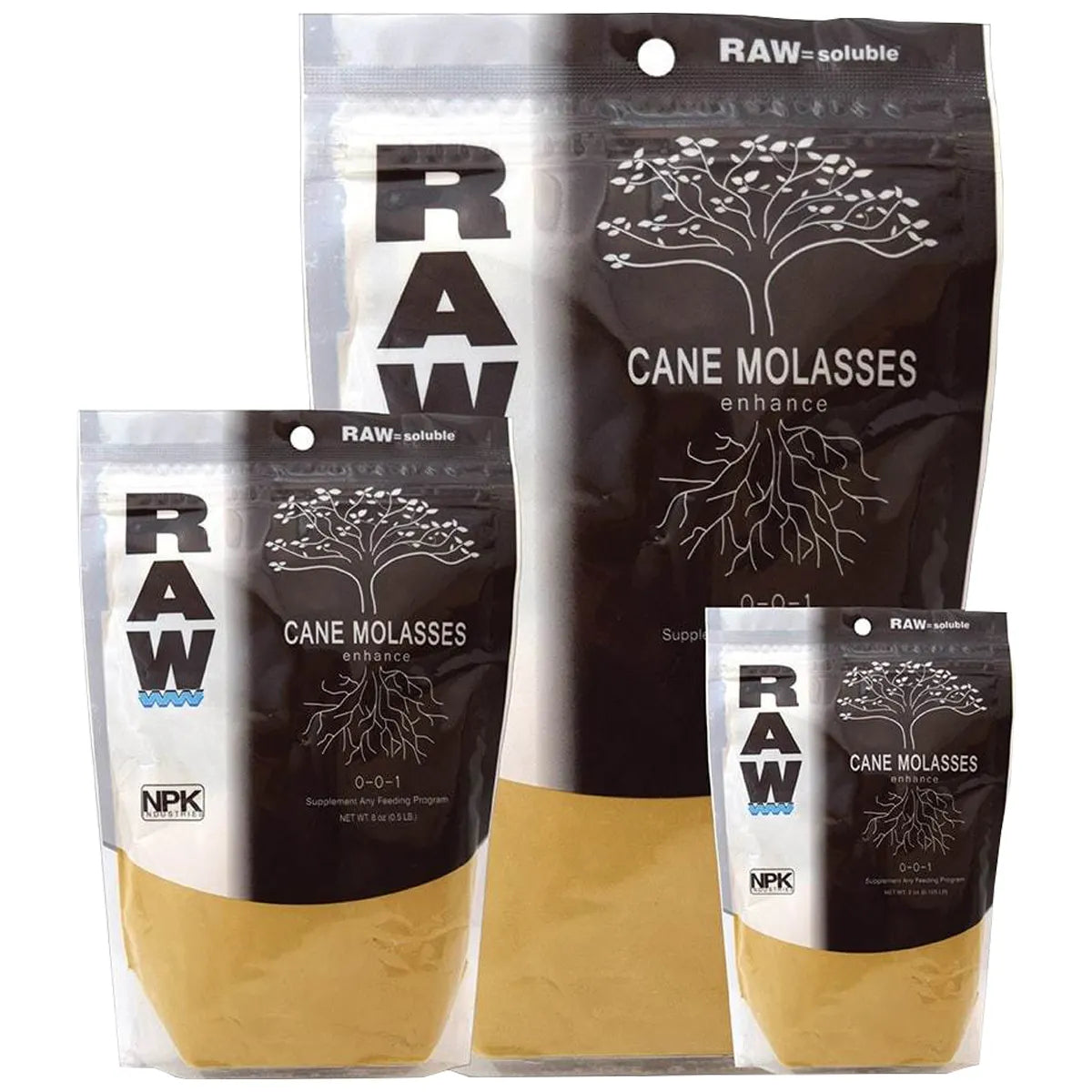HIGHSTREETHYDRO
Raw Nutrients - Cane Molasses
Couldn't load pickup availability
Bigger, Better, Tastier Fruits
Raw Cane Molasses is a high-grade, micronised carbohydrate additive that promotes better all-round growth and bigger and better fruits. It gives you all of the benefits of molasses but without the extra weight, inconvenience and mess. In fact, just two ounces of Raw Cane Molasses powder delivers the same impact as four litres of liquid molasses, making this way of doing things much better value for money!
Raw Cane Molasses provides carbohydrates for both the plant and the beneficial fungi and bacteria that live in the substrate, for a two-pronged effect. But don't be put off if you're a hydro grower - Cane Molasses performs brilliantly in sterile environments, too (see below for more info).
Brix Levels
Brix levels relate to the sugar concentrations in plants. Higher brix levels make plants stronger and hardier, with bigger harvests and better quality. With increased brix levels, you can expect to see better levels of resistance to stressors (pests, diseases, environmental changes, etc.), higher lip production for better energy storage, and increased production of essential oils.
How Do Carbohydrates Work in Plants?
Plants have evolved to work as a team with the beneficial microbes that surround them. For this reason, during dark periods, they send some of the sugars manufactured in the process of photosynthesis (where carbon is separated from CO2 using light energy) down to the rootzone to feed beneficial microbes in the substrate. This process occurs regardless of the growing method and will still occur when growing hydroponically in sterile conditions.
As plants secrete sugars through the roots, their own brix levels drop. In nature, this is an evolutionary trait that has overall benefits because the advantages to sharing sugars with beneficial microbes outweighs the short-term loss in brix levels. Fortunately, growers can get around this issue by feeding carbohydrates directly to the root zone, reversing the issue.
Materials
Materials
Shipping & Returns
Shipping & Returns
Dimensions
Dimensions
Care Instructions
Care Instructions


